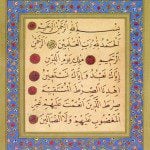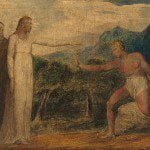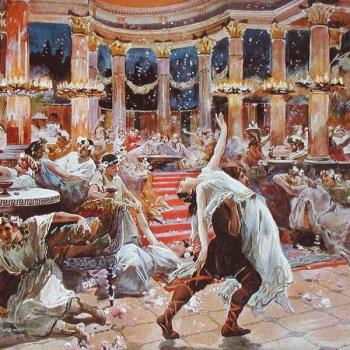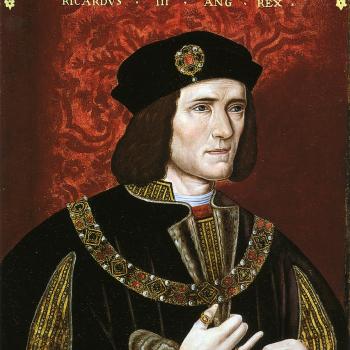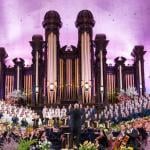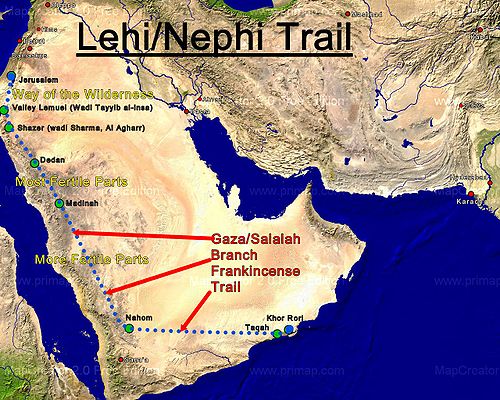
It was not only in the divinely revealed ordinances of the temple that frankincense played a central role. Incense was an important part of the worship of other deities as well,[1] and it had other functions besides worship in the strictest sense. In Israel, incense helped to purify from the plague, and it may have been thought to have a sanitary influence in places of slaughter and sacrifice.[2] Certainly its aroma must have been preferable to the smell that would otherwise have filled the temple, which, for all its holiness, was like a huge slaughterhouse. But even if it served such a prosaic function as covering up the stench of the sacrifices, the offering of incense is always portrayed as a very holy ritual wherever it occurs in the Old Testament.[3] In Babylon, frankincense was offered to highly esteemed mortal men as a token of respect and goodwill.[4] (Its high price alone would make sure that it was not offered to just anybody) In Israel,
frankincense was offered to the Lord by private people for the same reason—when, of course, they could afford it. Thus, donations of frankincense were made to the tabernacle in the wilderness and to the temple. And, as everyone knows, the wise men offered “gold, and frankincense, and myrrh” to the infant Jesus.[5]
Obviously, any substance as valuable as frankincense would generate a lucrative trade. When John the Revelator described the wealth of Babylon, frankincense was one of the commodities he listed in order to give his readers an idea of the almost unbelievable extent of Babylon’s riches.[6] King Solomon, who was also famous for his wealth and glory, profited specifically from his trade with Arabia.[7] This was a very active trade, requiring a great deal of travel through difficult territory, and it’s noteworthy that the Old Testament seems to have a fairly detailed knowledge of Arabian geography.[8] (Such biblical place names as Dedan, Bumah, Ephah, Midian, Ophir, Sheba, Tema, and Uz are either known or widely thought to be located in Arabia.) The classical geographer Strabo writes of caravan traders “in such numbers of men and camels that they differ in no way from an army.”[9]
But Solomon, the Greeks, the Romans, and the Babylonians were at the outer ends of the frankincense trade routes. What of the people actually living in Arabia? The great wealth of Arabian merchants is mentioned at several places in the Bible. “Who is this that cometh out of the wilderness like pillars of smoke, perfumed with myrrh and frankincense, with all powders of the merchant?” asks the Song of Solomon.[10] Ezekiel refers to “Sabaeans from the wilderness, which put bracelets upon their hands, and beautiful crowns upon their heads.”[11] Arabian merchants are routinely linked by the Old Testament with gold and silver, incense, spices, and precious stones.[12]
From a Latter-day Saint perspective, the most interesting thing about the frankincense trail that ran along the Red Sea coast of the Arabian Peninsula is that it seems to have been followed by the prophet Lehi during his flight from Jerusalem. The account in 1 Nephi is astonishingly accurate in its depiction of both the manner of the Lehi party’s travel and the route they took.[13] Even “Nahom,” mentioned in the Book of Mormon as the burial place of Ishmael— which is, by the way, a highly appropriate name for someone traveling through the Arabian desert—has now been shown to have existed in Arabia in just the right place at exactly the right time.[14]
[1] Leviticus 26:30-31; 1 Kings 11:7-8; 2 Kings 22:17; 23:5; 2 Chronicles 34:25; Jeremiah 1:16; 7:9; 11:13; 19:13; 32:29; 44:15-30; 48:35; Ezekiel 6:13.
[2] Numbers 16:46-48.
[3] The offering of incense could serve as an occasion of revelation, as is shown in the well- known story of Zacharias (Luke 1:5-23) and in the lesser-known account of John Hyrcanus, related in Josephus, Antiquities of the Jews, 13:282-83 (13:10:3 in the Whiston translation).
[4] Daniel 2:46.
[5] Numbers 7:14, 20; Jeremiah 17:26; Matthew 2:11.
[6] Revelation 18:13.
[7] 1 Kings 10:15.
[8] J A. Thompson, “Arabia,” in George Edward Buttrick, et al., eds., The Interpreter’s Dictionary of the Bible, 4 vols. and a supplement (Nashville: Abingdon, 1962-1976), 1:181.
[9] Strabo, Geographica, 16:4:23.
[10] Song of Solomon 3:6; compare 4:6, 14. Compare Ezekiel 38:10-13.
[11] Ezekiel 23:42.
[12] 2 Chronicles 9:14; Isaiah 60:6; Jeremiah 6:20; Ezekiel 27:22.
[13] Some interesting Latter-day Saint studies of this question have appeared. Hugh Nibley’s discussion in Lehi in the Desert/The World of the Jaredites/There Were Jaredites is a superb starting point. Lynn M. and Hope Hilton actually traveled through Arabia in search of Lehi’s trail and published a highly interesting and well-illustrated account of that journey in a book of the same name, published by Deseret Book in 1976. In my judgment, their proposed route for Lehi seems to be fundamentally correct. Eugene England’s article “Through the Arabian Desert to a Bountiful Land: Could Joseph Smith Have Known the Way?” in Book of Mormon Authorship: New Light on Ancient Origins, ed. Noel B. Reynolds (Provo: Religious Studies Center, Brigham Young University, 1982), 143-56, argues that the Book of Mormon account of Lehi’s journey across the Arabian peninsula has to have been written by an eyewitness and that the detailed knowledge of the ancient frankincense trail that it reveals was unavailable to outsiders in the 1820s. William J. Hamblin, “Pre-Islamic Arabian Prophets,” in Mormons and Muslims: Spiritual Foundations and Modern Manifestations, ed. Spencer J. Palmer, (Provo: Religious Studies Center, Brigham Young University, 1983), 85-104, surveys the nonbiblical prophets connected by the Qur’an with pre-Islamic Arabia and speculates that one of these may have been Lehi himself. Warren P. and Michaela J. Aston have plausibly refined the Hiltons’ findings in two papers, published by the Foundation for Ancient Research and Mormon Studies (FARMS) and titled, respectively, “And We Called the Place Bountiful” (Provo: FARMS, 1991) and “The Place Which Was Called Nahom” (Provo: FARMS, 1991) and, most recently, in their book In the Footsteps of Lehi: New Evidence for Lehi’s Journey across Arabia to Bountiful (Salt Lake City: Deseret Book, 1994). Some critics have objected that 1 Nephi mentions no camels. But this represents no serious problem, since the use of camels to cross Arabia would have been so obviously necessary that it would hardly have required mention. When I say to someone today that I plan to drive to Denver, he is unlikely to ask me what I’m going to drive — a car, perhaps? or a dogsled? The answer to that question is clearly understood. Significantly, the common Arabic verb rahala, which today means simply “to depart,” or even “to travel,” and which can be applied to travel by airplane, by boat, and by automobile, originally meant specifically “to saddle [a camel].” It would not have been necessary to mention camels any more than, when we speak of baptism, to specify water as opposed to gasoline or molten lead. [Expand and update references.]
[14] 1 Nephi 16:34.




